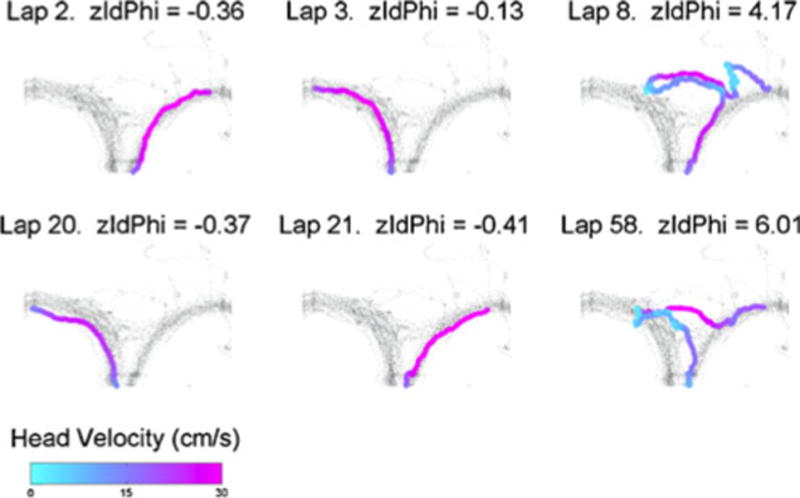Fig. 3.

Vicarious trial and error (VTE) quantification with zIdPhi. VTE was quantified at the choice point with a z-scored integrated angular velocity measure (zIdPhi). The position of the rat’s head was measured from an overhead camera as it passed through a choice point on the T-maze. Six laps are displayed, with the rat entering the choice point at the bottom and walking upward and to either the left or the right arm of the T-maze. The small gray dots are position samples for all laps of this session, and the larger colored dots are the position samples for the indicated lap. The blue-to-magenta shading indicates head velocity from 0 cm/s (light blue) to 30 cm/s (magenta). On laps 2, 3, 20, and 21, the head of the rat passes through the choice point quickly with a smooth trajectory. These laps have low zIdPhi scores and would not be classified as VTE by manual observation. On laps 8 and 58, the rat pauses and reorients right-to-left and then left-to-right before passing through the choice point. These laps have high zIdPhi scores and are qualitatively recognizable as VTE events
